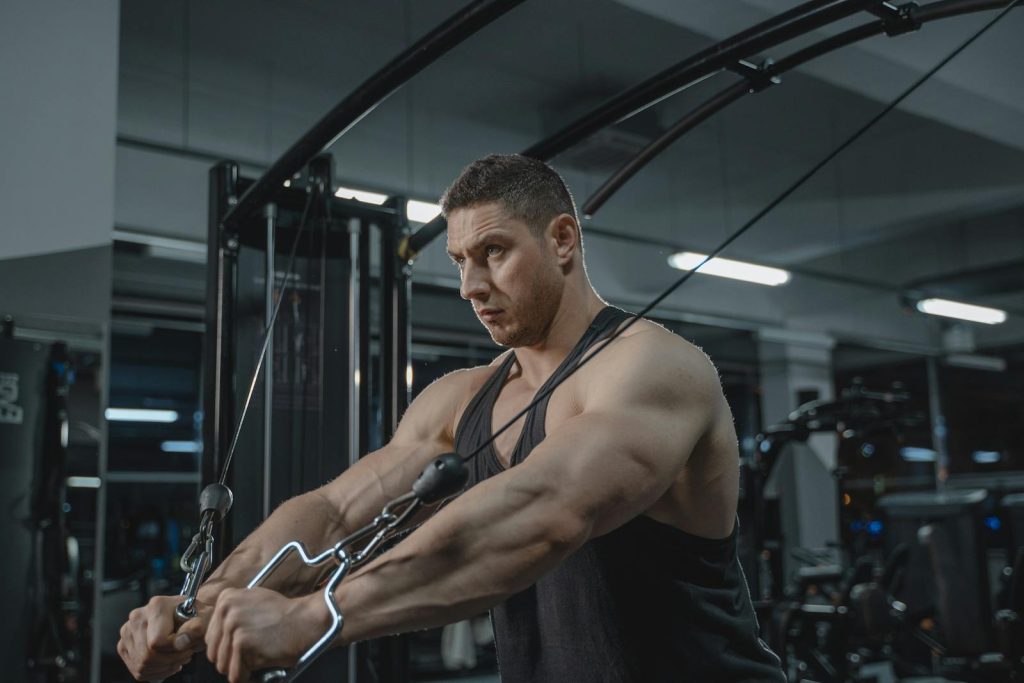The cable pullover is a top-tier exercise for building wide, strong lats, improving shoulder mobility, and boosting upper-body strength—all while protecting your joints. It works your back, core, and even chest with unique, consistent tension that few other moves deliver. Learning the correct cable pullover form is crucial for maximizing results and preventing injury.
Knowing how to do cable pullovers properly helps you get the most out of your workouts, avoid common mistakes, and understand when to use alternatives like dumbbells or bands.

In this guide, you’ll learn the exact form, muscles worked, science-backed benefits, and the best alternatives. Let’s get started!
What Is the Cable Pullover Exercise?
The cable pullover is an isolation exercise that targets the latissimus dorsi (lats) using a cable machine. By pulling a rope or bar attachment from overhead down toward your thighs, you create constant resistance throughout the entire range of motion—making it ideal for building back muscle and shoulder flexibility.
- Main equipment needed: Cable machine, rope or straight bar attachment
- Main goal: Build width and thickness in the upper back, improve posture, and increase shoulder mobility
- Great for: All levels, from beginners to advanced lifters
Official exercise guide – Legion Athletics
Muscles Worked by Cable Pullovers
The cable pullover primarily targets:
- Latissimus dorsi (lats): Main muscle engaged; key for back width and strength
- Teres major and minor: Assists lats in shoulder extension
- Posterior deltoids: Stabilize shoulders during the movement
- Long head of triceps: Supports arm positioning
- Rhomboids and lower trapezius: Help stabilize and retract the shoulder blades
- Core (abs, obliques): Activated for posture and balance throughout the movement
Secondary muscles: Pectoralis major (especially the sternal head) and serratus anterior.
Source: Steel Supplements, 2024
Proper Form: How To Do Cable Pullovers Step-by-Step
Follow these steps for the safest and most effective cable pullover:
- Set Up:
- Attach a rope or straight bar to a high pulley.
- Stand facing the machine, feet shoulder-width apart.
- Step back to create tension with arms extended overhead.
- Body Position:
- Hinge forward at the hips about 30–45°, soft knees.
- Keep a slight bend in your elbows (not locked out).
- Execution:
- Pull the attachment down in an arc toward your upper thighs.
- Keep your arms nearly straight—focus on moving at the shoulders, not elbows.
- Squeeze your lats at the bottom, pause, then slowly return to the start.
- Form Tips:
- Avoid swinging your torso or using momentum.
- Keep your core tight and shoulders away from your ears.
- Control both the lifting and lowering phases (eccentric is just as important as concentric).
Common mistakes:
Bending elbows too much (turns it into a triceps exercise), standing too upright (reduces lat engagement), using too much weight leading to sloppy form.
Video demonstration:
Benefits of Cable Pullover Exercise
Why include cable pullovers in your training? Here are key science-backed benefits:
- Superior Lat Isolation: The cable machine creates constant tension, leading to greater muscle activation compared to dumbbells or barbells. (Legion Athletics, 2024)
- Improved Shoulder Mobility: Full range of motion encourages flexibility and shoulder joint health.
- Better Core Engagement: The standing position forces your core to stabilize your entire body.
- Posture and Upper-Body Strength: Strengthens muscles crucial for good posture and powerful pulling movements.
- Joint-Friendly: Smooth resistance is easier on your shoulders and elbows than free weights, especially for those with joint issues.
Updated policies:
Some gyms now recommend cable pullovers as a joint-friendly alternative to dumbbell or barbell pullovers, especially for older adults or those with shoulder limitations (Self Magazine, 2024).
Best Alternatives to Cable Pullover
No cable machine? Want more variety? Try these proven alternatives:
1. Dumbbell Pullover
Performed on a bench, targets lats and chest, but offers less consistent tension.
2. Resistance Band Pullover
Portable, joint-friendly, and great for home or travel workouts.
3. Barbell Pullover
Allows heavier loads but can stress the shoulder joint; best for experienced lifters.
4. Kneeling Cable Pullover
Variation that adds stability and focus to the movement.
5. Wide-Grip Pull-Up or Lat-Focused Row
Excellent bodyweight or barbell options for back and lat development.
See more alternatives: Set For Set: Best Lat Pullover Alternatives
FAQs: Cable Pullover Exercise
Is cable pullover better than dumbbell pullover?
Yes, for lat isolation and consistent tension, the cable pullover is generally superior. Dumbbells are still useful, especially if you don’t have a cable machine.
Can beginners do cable pullovers?
Absolutely—just start with light weight and focus on form.
How many sets and reps?
Aim for 3–4 sets of 8–15 reps, focusing on slow, controlled motion.
What grip should I use?
Rope, straight bar, or EZ-bar—all work, but rope often allows a greater range of motion and better lat squeeze.
Conclusion
Mastering the cable pullover can help you build a wider, stronger back, improve shoulder health, and supercharge your upper-body gains. Focus on form, start light, and add variety with alternatives as needed. Ready to upgrade your training? Add cable pullovers to your routine and notice the difference!
